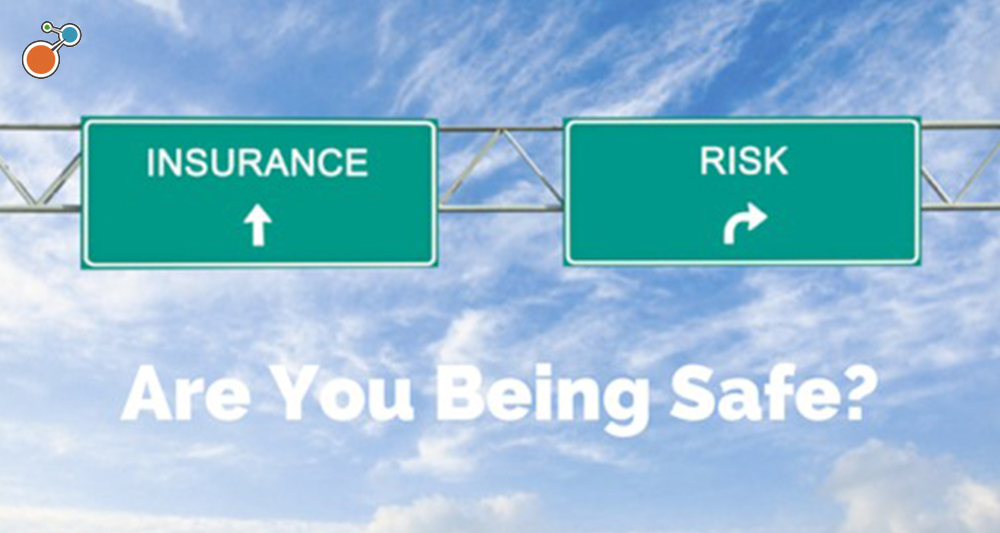A health and safety risk assessment is a critical part of any workplace safety program. A thoughtful and thorough assessment will help you proactively identify at-risk people and situations so you can take the necessary steps to prevent illness and injury.
What is a Health and Safety Risk Assessment?
A health and safety risk assessment starts with a complete inspection of your work environment, systems, and equipment to determine potential safety hazards and mitigating actions to prevent injury.
No health and safety risk assessment is the same. Each one needs to be completely customized to the conditions of the workplace and include specific goals to manage actions and resources related to occupational safety. Common categories of health and safety risk assessments include fire risks, hazardous substances risks, digital and equipment risks, manual handling risks, and other risks that could affect safety in the workplace.
Health and safety risks should be reassessed if there are any changes to activities, processes, or regulations – or if someone identifies a hazard. The most effective way to manage safety is to proactively schedule regular inspections to stay on top of potential hazards.
Why is a Health and Safety Risk Assessment Important?
Keeping employees, customers, and others safe is, of course, the primary reason for a health and safety risk assessment. Having a formal process demonstrates to regulators that you are taking appropriate measures to protect the health and safety of your employees. Visible efforts to correct hazards also helps promote a culture that prioritizes and values health and safety.
Health and safety risk assessments, along with the associated training and education, raise awareness of the very real and present hazards that employees face on a day-to-day basis. This level of transparency opens the door to increased dialogue and communication between all employees – from the shop floor to the C-suite. People not only feel safer working for the organization, but they are also more inclined to report incidents or near misses. And the more incidents that get reported, the better, since you can only fix what you know about.
Here are five steps to creating your own health and safety risk assessment:
 Identify hazards. Begin by determining what hazards employees face on a daily basis, including physical accidents, natural disasters, technological hazards, chemical hazards, and biological hazards. Make sure there are adequate fire extinguishers, safety kits, etc. And ensure that workers have the proper training to perform tasks – like lifting heavy loads – without risking injury.From there look at previous accident and incident reports, recent workers’ compensation claims, and general liability insurance claims. These reports can help shed light on weak points that are also costly.If you have a sizable number of incidents or claims, software can automatically aggregate the data, connect the dots, and surface any issues that might otherwise have gone unnoticed.
Identify hazards. Begin by determining what hazards employees face on a daily basis, including physical accidents, natural disasters, technological hazards, chemical hazards, and biological hazards. Make sure there are adequate fire extinguishers, safety kits, etc. And ensure that workers have the proper training to perform tasks – like lifting heavy loads – without risking injury.From there look at previous accident and incident reports, recent workers’ compensation claims, and general liability insurance claims. These reports can help shed light on weak points that are also costly.If you have a sizable number of incidents or claims, software can automatically aggregate the data, connect the dots, and surface any issues that might otherwise have gone unnoticed.- Evaluate the risks. Once you’ve identified your list of hazards, the next step is to evaluate the likelihood of occurrence. Consider factors such as the frequency and length of exposure, number of people that could be affected, and the location of the hazard. Then assign a rating to each risk, from least to most severe to help prioritize your actions.
 Determine an action plan. Your action plan should include recommendations about your mitigating actions, what resources are needed, who is accountable, and when actions should be completed. The plan should also address how you will monitor risks, what controls are in place, and what training or other communication is needed. To help determine what actions to take, consider applying classic risk management techniques:
Determine an action plan. Your action plan should include recommendations about your mitigating actions, what resources are needed, who is accountable, and when actions should be completed. The plan should also address how you will monitor risks, what controls are in place, and what training or other communication is needed. To help determine what actions to take, consider applying classic risk management techniques:
- Avoid the Risk—Stop the risk altogether. This is the best action if the level of risk is still unacceptable even after mitigation strategies.Example: Temporarily shutting down a location based on health or public safety threats
- Accept the Risk—Taking on some risk is essential for growing a business. With the right prioritization, you can free up your budget for more severe threats by taking simple, low-cost steps to mitigate certain risks.
Example: Restricting access to specialized machinery to people who’ve gone through training. - Mitigating the Risk—Reduce the likelihood that the threat will occur or minimize the impact by putting control measures in place.Example: Supplying health and safety equipment such as fire extinguishers, eyewash stations, emergency kits, goggles, and panic buttons.
- Record your findings. OSHA requires that you document your health and safety risk assessment process if you have more than five employees in your workplace. Your documentation should include details about the hazards and risks you’ve discovered and how you intend to address them, along with evidence that you:
- Conducted a proper check of your workspace.
- Determined who would be affected.
- Controlled and dealt with obvious hazards.
- Initiated precautions to keep risks low.
- Kept your staff involved in the process.
The benefits of a clear audit trail, however, go far beyond meeting compliance requirements. Defining hazards, outlining remediation steps, and assigning responsibility ensure that action is taken – and that what will protect employees, customers, visitors, and anyone else in your environment.
 Monitor risks and update assessment as necessary. Your workplace is constantly evolving and so are the risks to your business. Each new piece of equipment, procedure, and person introduces a potential new hazard that must be regularly evaluated and updated in your risk assessment process.
Monitor risks and update assessment as necessary. Your workplace is constantly evolving and so are the risks to your business. Each new piece of equipment, procedure, and person introduces a potential new hazard that must be regularly evaluated and updated in your risk assessment process.
To stay on top of unknown dangers, you must continually monitor risks so you can spot trends, manage hazards, and update your health and safety risk response strategies. This can be done by assigning risk owners to be accountable for certain risks, responsible for conducting regular inspections, running reports, tracking usage, and submitting data. Software can also be used to collect data, send automatic alerts, and streamline risk assessments so you can take quicker action.
A Real-Life Health and Safety Risk Assessment
Consider this manufacturer of toys, clothing, and other merchandise. Safety standards and equipment varied with hundreds of stores built in different years, layouts, and locations. To coordinate safety standards across the chain of stores, the company began conducting field visits and safety audits.
Corporate reps worked with the store managers to answer questions around fire extinguishers, sprinkler heads, and emergency-preparedness kits. They double checked on staff members and made sure they were lifting boxes of merchandise in the correct forms that reduced the risk of injury.
The auditor added the answers, photos, and videos directly into the system. The software also allowed the company to weight specific questions more heavily than others to reflect safety standards more accurately. In the program’s first year, the company saw its safety scores improve and claims decrease.
A health and safety risk assessment identifies potential hazards and risks affecting your business. Once the risk is identified, prioritized, and tracked you can develop practical solutions that mitigate or eliminate it – keeping employees, customers, and others safe and your organization running smoothly.
To find out more about fixing problems at the source, download our guide to using Root Cause Analysis, or learn about Riskonnect’s Health & Safety solution.




